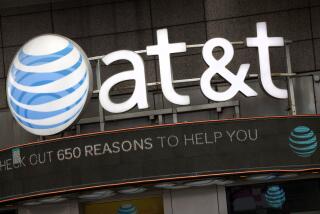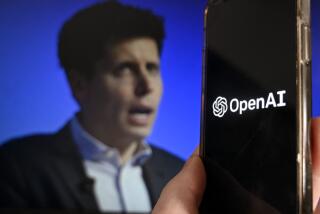AT&T; Exec Trades Prosperity for Uncertainty
- Share via
Last week, Daniel R. Hesse stunned the wireless world by leaving his job as head of AT&T; Wireless just weeks before the company’s planned initial public offering.
It wasn’t his departure that was surprising--that had been expected ever since AT&T; Chairman Michael Armstrong passed over Hesse late last year to name John Zeglis chief executive of the phone giant’s new, expanded wireless group.
What floored industry watchers was the timing. By leaving before the wireless unit’s widely anticipated IPO, Hesse is forfeiting a bucket of stock options worth more than $50 million--a figure he calls “conservative.” What’s more, he is leaving the AT&T; riches behind to join an obscure Seattle-area firm that has operated for 30 months without so much as its name on its front door.
We interviewed Hesse on Friday about his career gamble and the company that made him do it.
Question: You are credited with building the company’s wireless unit into a powerhouse that could fetch as much as $10 billion next month when AT&T; sells up to 20% of it in an initial public offering. Why leave at all, and most of all, why leave now?
Answer: This is probably the worst time I could possibly pick to leave. We’ve had two great years in a row. We announced a whole bunch of new data products, so 2000 is going to be another great year. And of course, the IPO is a little over a month away.
Q: And with that IPO, there was a huge payoff for you if you stayed, right?
A: The financial package I was leaving behind was, quite frankly, extraordinary--I’ll just leave it at that. It was absolutely something that I considered very heavily, because for me it’s a lot of money. I’ve also been with the company for 23 years, so everything at AT&T; was a plus in that I was in a great, vibrant, growing business.
Q: Still, people expected you to leave after the Zeglis appointment.
A: That’s true. . . . It would have been nice to have been chosen for that position. I was called a lot with offers, but this TeraBeam situation was the first one that was exciting enough to walk away from a business I love, a company that I’ve been committed to and a group of people at AT&T; Wireless that I’m just crazy about.
Q: Tell us about TeraBeam, the company you’re joining as CEO.
A: You have a brilliant founder, Greg Amadon, who has put together a brilliant team of optical scientists that has created this breakthrough technology. It has the ability to send gigabit speeds of data right through [glass] windows, using what they call “fiberless optics,” which is just like what goes over fiber optics but using the air as the medium instead of glass.
Q: How does it work?
A: Architecturally, it’s almost identical to building a cellular network. You have cell sites, but instead of shooting out radio signals [such as in mobile systems], we’re shooting out light. What you’ll have is overlapping cells, or circles, that when put together would cover a whole city.
Q: How does it stack up against competing types of data connections, such as fiber optics or the so-called fixed wireless systems used by Teligent and Winstar?
A: It’s got all sorts of advantages, and it has the ability to completely redefine expectations of what’s possible in the last mile [the link between buildings and the nearest network hub]. There are no rooftop rights [for a big antenna]. There are no rights of way in terms of digging up the streets. There is no need to license expensive spectrum, because the technology doesn’t use radio waves at all.
Q: When will we see how well it works?
A: The technology clearly works. But taking it from almost a prototype that’s working now with one customer [in Seattle] and providing really good service to a mass production and then rolling out citywide service with all those headaches . . . there’s a long way to go, but that’s what’s so exciting for a guy like me. It’s too early for me to tell when I’d be ready for full-scale commercial service, but the goal is to be in commercial service before the end of the year 2000, at least in Seattle.
Q: The best technology doesn’t always win, though, right?
A: I think you can have an advantage in technology, but if you don’t execute well, it’s not going to make any difference. You’ve got to execute in the real dog-eat-dog, competitive world of selling to business customers, and their expectations are very high. I’m going in with my eyes open with respect to what’s required.






